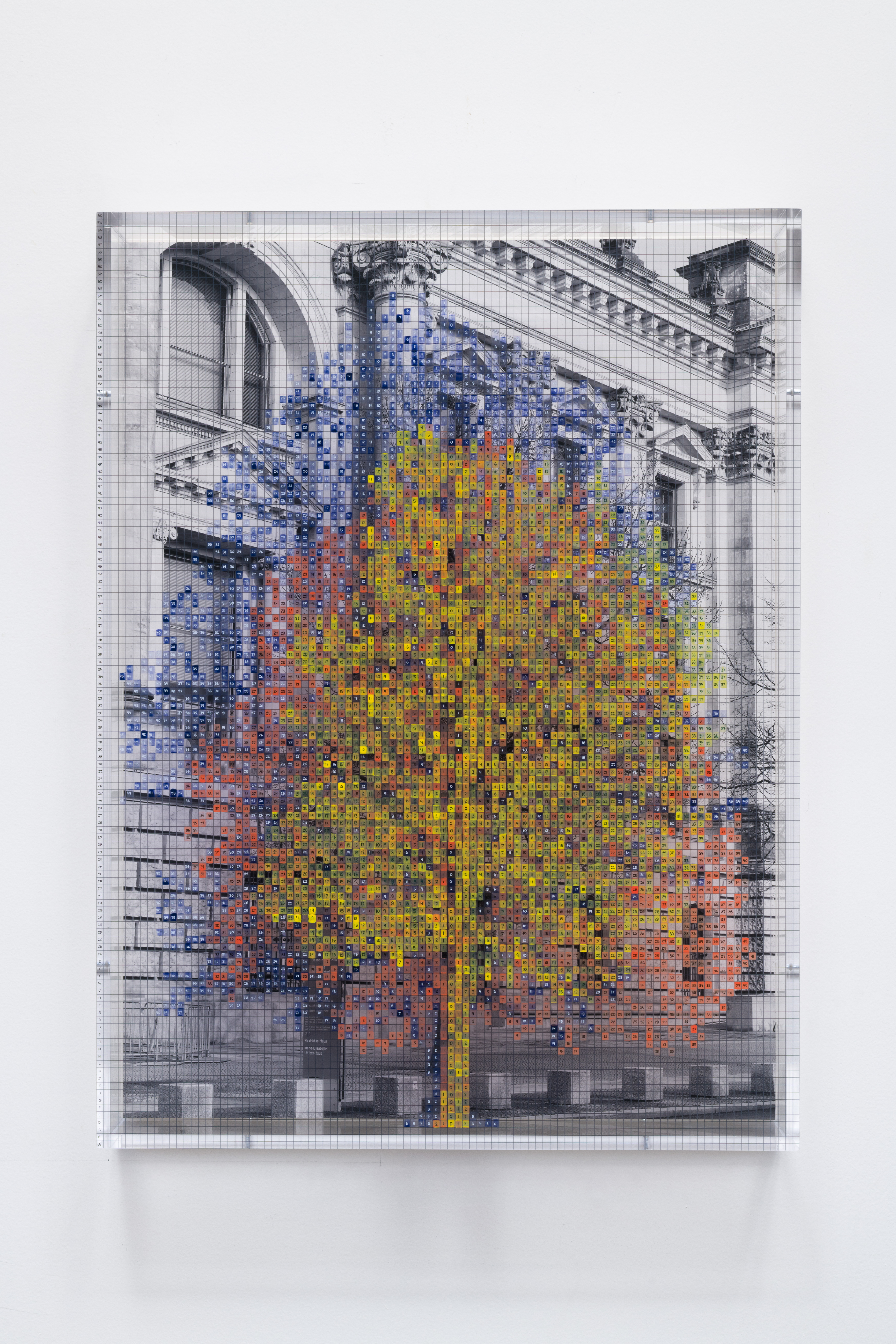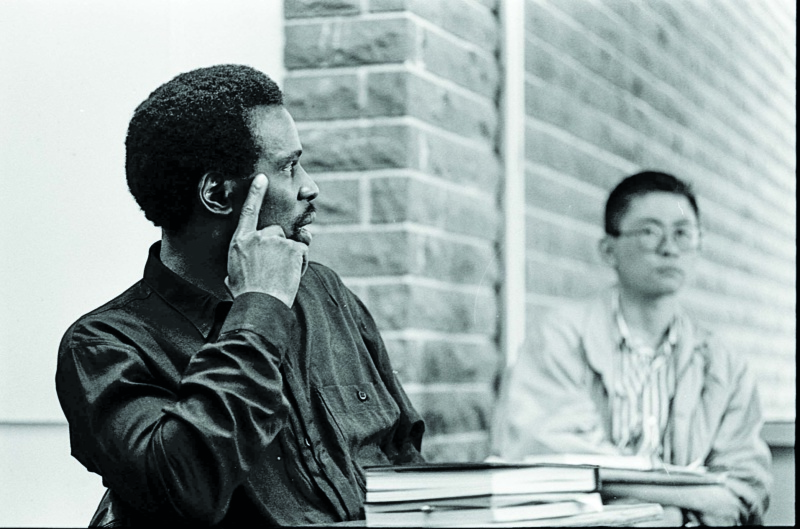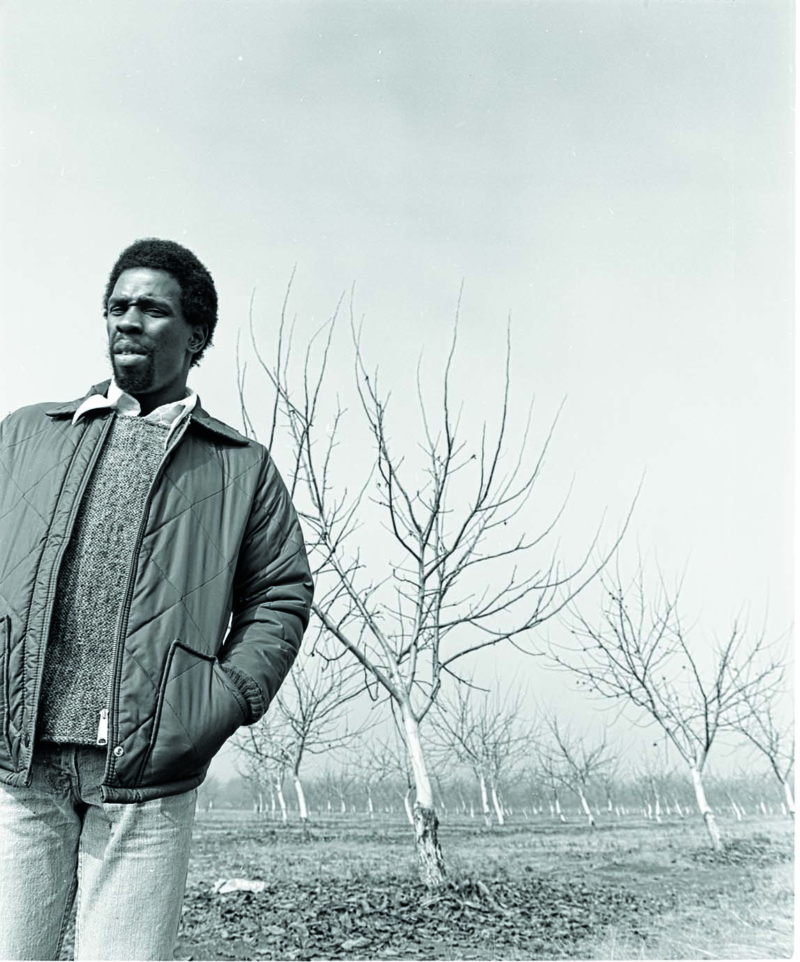
Los Angeles-based artist Charles Gaines has been a pivotal figure in conceptual art for decades. He was awarded the prestigious Edward MacDowell Medal last summer, and with his critically praised solo show at mega-gallery Hauser & Wirth this past fall, he is finally getting the recognition he is due. What Gaines’s newly procured wider audience may not realize is his profound impact through teaching over the last 40 years. Revered and beloved for his unwavering commitment to a conceptually-based artistic practice and pedagogy, Gaines has influenced many of today’s most acclaimed artists throughout LA and around the globe. With their own words and art, they share the impact of Gaines’s genealogy.

EDGAR ARCENEAUX Charles was the first artist I met who was interested in both random and organized patterns in vastly different domains, like social systems, history and science. I too had these interests in poetic redundancies, but didn’t have a framework for it. He helped to give language to phenomena I was exploring in my own young life. Though I didn’t completely comprehend his work, I knew through Charles that art using patterns and poetics could describe the world. At that time, I was a representational artist, trained in conventional painting and drawing techniques. Through his class on semiotics, his writings on content and form, and numerous discussions—many involving alcohol— between us, he presented a living example of how to have a life and practice as a black man who could explore freely anywhere his ideas would take him.
ANDREA BOWERS I have a research and archival practice that came from observing Charles’s practice. Charles’s work makes theoretical arguments for my work to exist—I work from a more activist position, but Charles created the theoretical roadwork in art for me to be able to make the work I make.
MARK BRADFORD Charles expanded my understanding of what it means to be an artist and taught me to bring critical thinking into my art-making. As a mentor, he gave me the blueprint for approaching art as something much more than simply making objects; he gave me the theories and histories that go into deciding what objects to make in the first place.
SAM DURANT Charles is the most important teacher in Los Angeles, and perhaps the country, in the last thirty years. He is equal to and perhaps more important than the likes of John Baldessari and Michael Asher—I say more important because he has helped so many young artists of color achieve recognition when their chances of success were even more circumscribed than they are today.
OLGA KOUMOUNDOUROS Charles has been one of the most influential educators in my practice philosophically and pedagogically. His impact is deep.
NERY GABRIEL LEMUS I think a lot about his view on the signifier and signified—what things are moving in it and what does it mean, or how are things going to be perceived? Because of Charles’s teachings, I think about the idea that there’s no mark-making that I could possibly make that doesn’t have a history or doesn’t have a signifier. And when I think about that, I’m mindful of the source material that I’m using. I’m making sure that if I’m representing a people or culture, I’m mindful and respectful to that culture. I even take into consideration someone who might not agree with me, particularly with the political issues that I present in my work. I make sure that I’m true to my belief system but I’m not doing it in a way that belittles, marginalizes or oppresses a particular culture.

DASHIELL MANLEY I remember a studio visit with Charles saying that content cannot surface without dialectical tension. He was noticeably frustrated with my insistence to the contrary. I still go back and forth on this, but it stuck with me. With Charles, I learned that persistence and open-mindedness are perhaps more important than immediate and total understanding.
LAURA OWENS Charles posed several questions to me that were similar to Zen koans in that they made me question my own framing of the world. He also gave me permission to be any kind of artist I wanted to be, as well as do very different things with my art.
GALA PORRAS-KIM Charles has contributed so much to the forming of the thoughts of so many generations of CalArts students who practice in LA. Now I teach because it is rewarding to contribute to forming someone’s understanding of art-making.
GARY SIMMONS As a man, friend and mentor, Charles informs my work on a day-to-day basis in the studio. His patience, focus and persistence are qualities that I try to embody as an artist.
MINDY SHAPERO Charles’s impact has been bridging the two ideas of the conceptual and the political in art—“Any single image is political, therefore the history of art is political.”
This story was produced by Allison Berg. This story was originally published in the Winter 2020 issue of LALA Magazine.










 in your life?
in your life?

